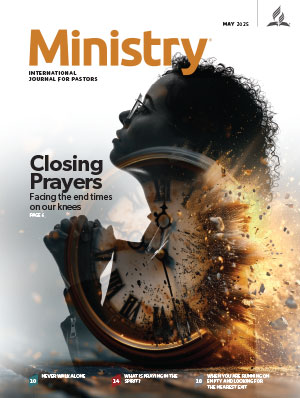An ordinary trip to a youth conference turned out to be a valuable lesson on intercultural mission work. While traveling to the host country in Asia, I remembered that one of my doctoral professors had been a missionary in that place decades ago. At first I had no expectation of encountering his family, but after casually mentioning their names to some local church leaders, I sensed I could trace the impact of their work in that field. How successful had they been in their mission work? For that matter, how can one measure success in ministry?
Historical background
Through the years, the professional literature has suggested different metrics for gauging the impact of mission and ministry. Historically, William Carey’s influential booklet in 1792, An Inquiry Into the Obligation of Christians to Use Means for the Conversion of the Heathen, offered one of the first assessments of the global progress of Christian mission in modern times. His strong appeal to fulfill the Great Commission included data (not necessarily precise) about the number of world religions adherents and observations about the Christian presence in different regions of the globe, the need for the Bible in local languages, and anti-biblical cultural customs. According to Carey, “All these things are loud calls to Christians, and especially to ministers, to exert themselves to the utmost in their several spheres of action and to try to enlarge them as much as possible.”1
More recently, during the second half of the past century, Donald McGavran’s church growth movement arose from the perception of a lack of growth among churches in the Southern Asian mission field. Peter Wagner translated such understandings into the North American reality, and it became “the most influential movement in the American churches in the 1990s.”2 McGavran emphasized the accountability of numerical growth alongside the principles of receptivity and homogeneity.
In 1996, as part of the same movement, Christian A. Schwarz sought to bring balance to mission and ministry assessment by proposing the Natural Church Development (NCD) model, whose first characteristic was a focus on enhancing the quality of a church rather than solely pursuing numerical growth.3
Around the year 2000 a new response emerged in North America, known as the missional church movement, which highlighted the need for a more biblically grounded ecclesiology. Considering the declining statistics of traditional denominations, missiologists such as Paul Hiebert and Alan Hirsch advocated for a shift from the concept of church as a "bounded set" to understanding it as a "centered set". This perspective emphasized discipleship as encompassing more than mere conversion or membership. The suggestion is that the single most important metric for evaluation is the number of fully trained disciples being developed in the church.4
During the past two decades, numerous publications have addressed the challenge of recalibrating ministry and mission metrics. Examples of such metrics include the number of people reporting improved marriages over time, enhanced friendships, those being mentored or serving as mentors, being able to articulate life mission, serving other people in some venue, practicing intentional blessing strategy for those around them, and growing in financial giving to kingdom causes.5
Mission and ministry metrics
While the issue of mission and ministry metrics has been the subject of significant research, discussion, and experimentation, it has been observed, however, that, for many churches today, the prevailing notion remains the simplistic idea that “growth is the goal, and membership is the measure.”6 Alongside worship attendance and fundraising levels, they are the three top areas, often referred to as ABC metrics—attendance, building, and cash.
On the one hand, church metrics are important because they provide tangible evidence of the impact a church has on its members and the community it serves. They assist leaders in making data-driven decisions and evaluating the effectiveness of their strategies and programs—it establishes accountability.7 On the other hand, there is a risk of becoming overly enamored with the statistics to the extent of losing sight “of the ministry and the people behind them.”8
Contemporary mission and ministry metrics
The Seventh-day Adventist Church has also implemented several metrics related to mission and ministry, many of them included in the regular detailed annual statistical reports produced by the General Conference’s Office of Archives, Statistics, and Research. The reports provide information on accessions (baptisms and professions of faith), membership, and tithes and offerings, as well as details about various institutions. Additionally, they contain information about missionaries.
If for many years the church seemed to lack an operational comprehensive metric,9 lately it seems that there has been greater intentionality in considering what data to collect and measure as well as how it should inform the church’s strategic planning for mission.
At the end of 2023, a report outlined the proposed strategic plan for the next quinquennial period (2025–2030). David Trim, the director of the Office of Archives, Statistics, and Research, shared extensive research detailing the importance of data analysis in selecting plans for the church. His report highlighted key facts regarding the spiritual practices and doctrinal beliefs of Adventist members.
Six measurable goals related to mission Trim mentioned seek to increase (1) the number of church members sharing the gospel and making disciples; (2) the work of spiritual nurturing and evangelistic training after baptism so that new believers become part of total member involvement in the mission of Christ; (3) new groups of Seventh-day Adventist believers worldwide, particularly in urban areas, in the 10/40 Window, and among post-Christians; (4) mission by young people and to young people; (5) mission engagement by all church entities through promoting wholistic health, humanitarian care, education, and outreach to displaced persons; and (6) the use of traditional and new media to proclaim the three angels’ messages and connect people to Adventist worshiping groups.
The test of time
After arriving in the country where my professor had served as a missionary, I sent him a message to inform him of my whereabouts. To my surprise, he replied, encouraging me to meet some of his friends who lived near my accommodation. His friends had been young Buddhist monks who served the community in the surrounding villages. The missionary family would host the monks in their home, provide them with meals, and support their work. In turn, the monks became good friends with the Adventist community and supporters of the Adventist institutions in the area.
After many years, the same monks had risen to become the top leaders in the regional Buddhist office and school. When I introduced myself as an envoy of the former missionary, they treated me with great deference despite my being a stranger to them. The most senior leader even made a point to visit me.
I wish you could witness the emotions in their voices and eyes as they described the details—many of which I had not heard from my humble professor—about their relationship with their old friend of four decades: the Adventist missionary.
A prevailing sentiment is that the Adventist community could significantly improve its relationships with those religious leaders. Yet very few people have met or had any contact with those prominent Buddhist leaders.
Besides the incredible experience, I left that country reflecting on the effectiveness of my own mission and ministry. How am I treating the young leaders in my community? What kind of attitude am I displaying toward people of other world religions? What has been my intangible influence on those I encounter? What will they remember about me in a few decades?
I truly enjoy discussions about mission and believe that further development can be achieved from various perspectives and in different contexts. Perhaps the test of time should also be considered as a dimension of the metrics of success in mission and ministry.
God’s commission, our collaboration
As missiologists have noted, there is a persistent need for a comprehensive mission metric to more effectively measure the progress and growth of Adventist Mission.10 As the saying goes, “You are what you measure.” If the church does not measure something, it likely does not value it. As the world scene becomes increasingly complex and interconnected, the church can leverage technology to gather and access more reliable information, making this an essential ongoing discussion.
While God’s initiatives in mission are perfect and powerful, human collaboration is another matter. It must be continually assessed and improved. Therefore, intentionally evaluating mission and ministry will provide a clearer picture of the observable aspects of what God is doing while also guiding the faithful response of His human representatives.
It is also essential to avoid the detrimental divide between quantity and quality in church measurements while recognizing the limitations of any metric model employed, particularly the traditional ones. Qualitative approaches that do not rely on numerical data can also provide valuable insights into the church. In my doctoral dissertation, I chose to examine the character of the Adventist movement through an analysis of its ethos.11 Guiding questions included What does it mean to be faithful to God’s commission? What metrics will assist the church in achieving what is important?
Equally important is that the understanding reflected in the mission and ministry metrics be shared at all levels. It will help bridge the gap between committees, academia, and church members. “The church is a community of people, living in a loving relationship with God, one another, the wider church, and the world. A simple framework for rethinking metrics should focus on real flesh and blood, matterized people,” and their relational dimensions.12
The borrowed title from David Yonggi Cho’s famous church growth book should remind us that ministry and mission are always about “more than numbers.” Ultimately, the path to success is to display thoughtful, biblical, and urgent yet patient faithfulness to God’s commission and be ever attentive to the leading of the Holy Spirit until Jesus returns.
- William Carey, An Inquiry Into the Obligation of Christians to Use Means for the Conversion of the Heathen, updated (Pensacola, FL: Chapel Library, 2022), 23, https://www.chapellibrary.org/pdf/books/enqu.pdf?srsltid=AfmBOoowSMI3cNOE2QPSBSC
hNjSY4sLjDWinaZFHlVvx2PygtHlv71ll. - Os Guinness, “Church Growth: The Movement of the Nineties,” Ligonier Ministries, December 13, 1991, https://learn.ligonier.org/articles/church-growththe-movement-of-the-nineties.
- “Welcome to Natural Church Development (NCD),” NCD, accessed on Jan. 17, 2025, http://www.ncd-international.org/public/.
- Ken Adams, “The Most Important Metric,” Discipleship.org, accessed Jan. 17, 2025, https://discipleship.org/blog/the-most-important-metric/.
- Reggie McNeal, Missional Renaissance: Changing the Scorecard for the Church (San Francisco, CA: Jossey-Bass, 2009).
- Zach First, “What to Measure If You’re Mission Driven,” Harvard Business Review, July 9, 2015, https://hbr.org/2015/07/what-to-measure-if-youre-mission-driven. More recently, while living in Asia, I have come to realize that even a definition of member is often unclear. What qualifies someone to be a member, both in theory and in practice?
- Brett, “Church Metrics Breakthrough: Unlocking Success in Ministry [2024],” Clickmill, accessed Jan. 17, 2025, https://clickmill.co/church-metrics/.
- Thom S. Rainer, “If I Had to Choose Five Church Metrics to Measure and Follow . . .” Church Answers, November 25, 2024, https://churchanswers.com/blog/if-i-had-to-choose-five-church-metrics-to-measure-and-follow/.
- Clyde Morgan, “Measuring Our Mission Progress,” Journal of Adventist Mission Studies 10, no. 1 (2014): 135–149, https://digitalcommons.andrews.edu/cgi/viewcontent.cgi?article=1258&context=jams.
- Bruce L. Bauer, “Needed: A New Metric to Assess Adventist Mission,” Journal of Adventist Mission Studies 13, no. 1 (2017): 98–107, https://digitalcommons.andrews.edu/cgi/viewcontent.cgi?article=1362&context=jams.
- Marcelo E. C. Dias, “An Analysis of Adventist Mission Methods in Brazil in Relationship to a Christian Movement Ethos” (PhD diss., Andrews University, 2016), https://digitalcommons.andrews.edu/cgi/viewcontent.cgi?article=2865&context=dissertations.
- Michael Adam Beck, “Maintenance Is NOT the Mission: Matters of Measurement and Measuring Matter," Passional Church, Dec. 19, 2024, https://passionalchurch.substack.com/p/maintenance-is-not-the-mission-matters.














